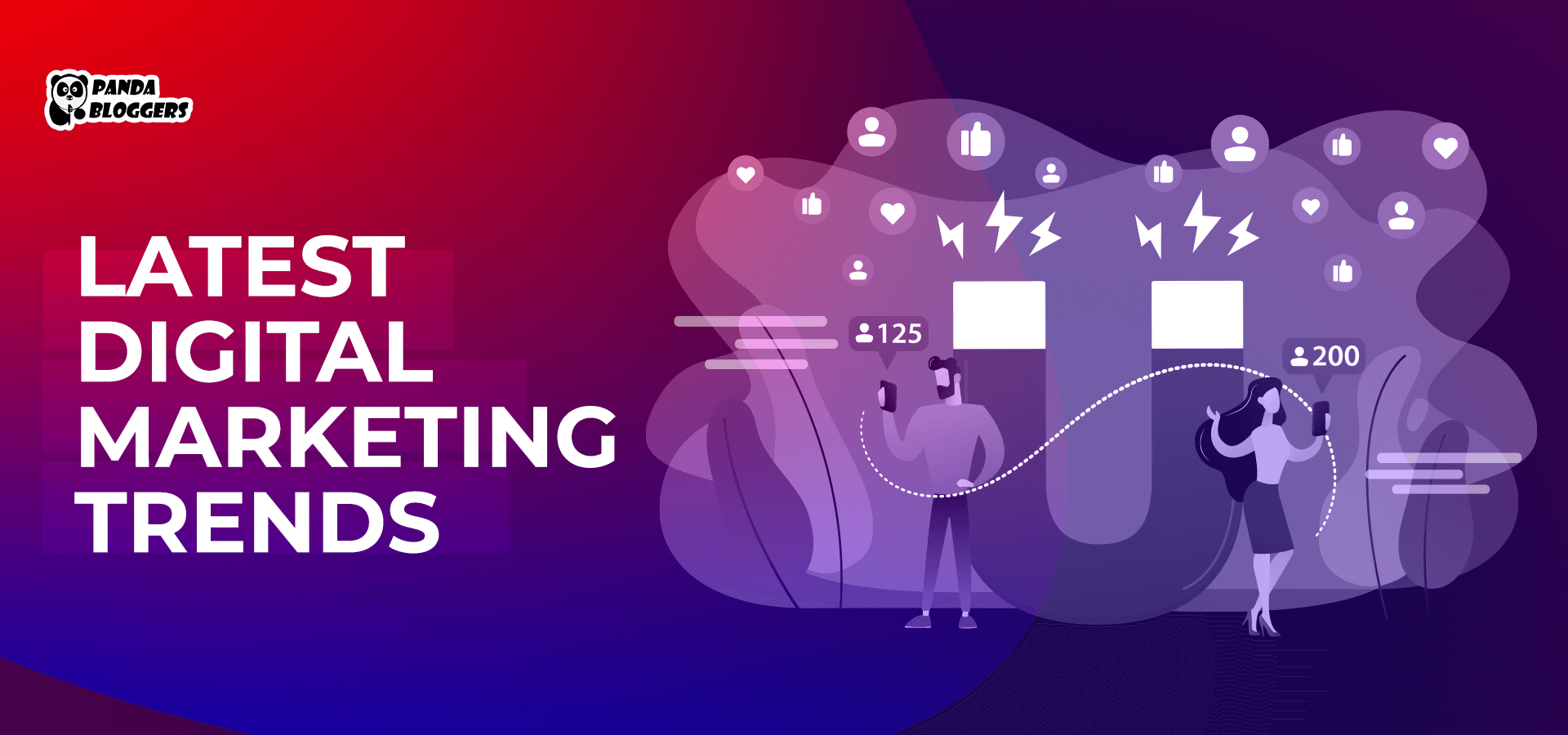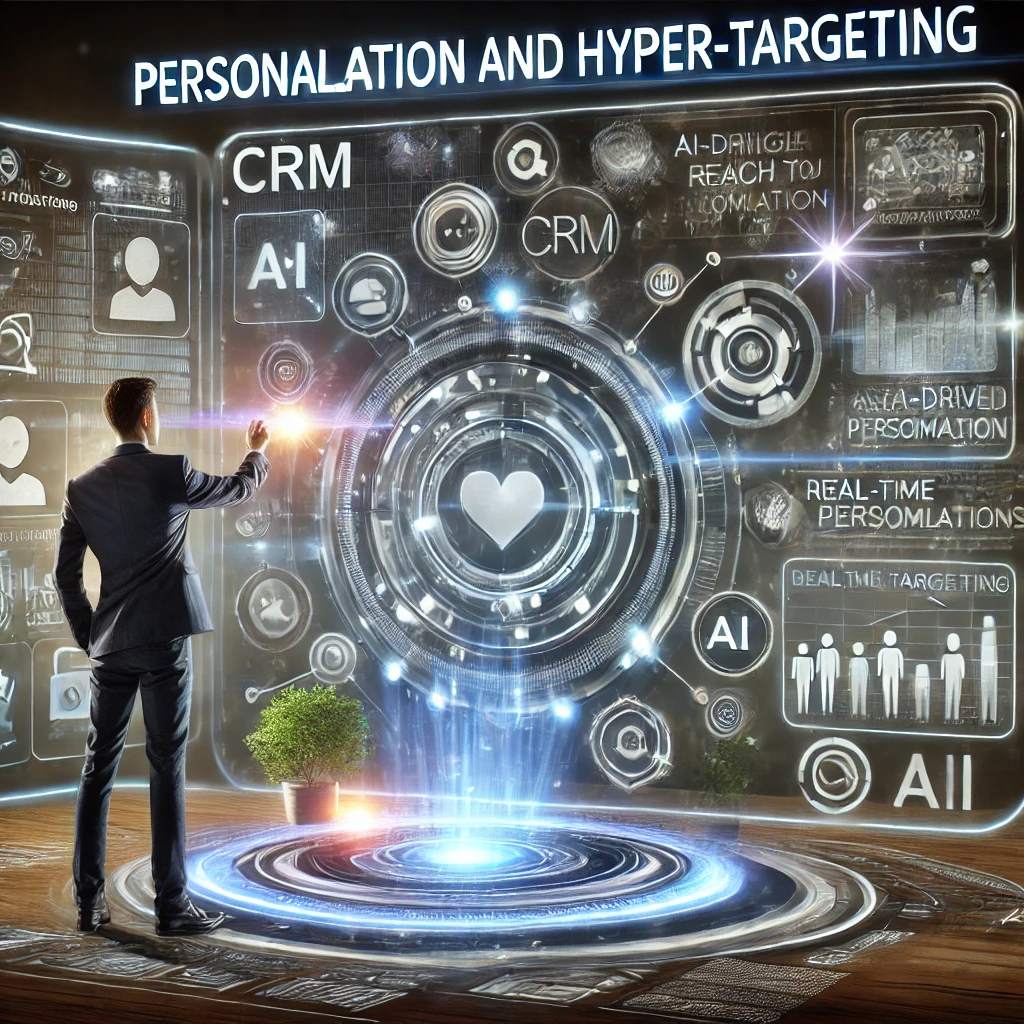 Latest Digital Marketing Trends of 2025
Latest Digital Marketing Trends of 2025
The world of digital marketing is evolving at an unprecedented pace, driven by rapid technological advancements and changing consumer behaviors. Businesses must stay ahead of the curve to remain competitive and relevant in this dynamic landscape. The latest digital marketing trends are reshaping how brands engage with their audiences, optimize their strategies, and drive conversions. From AI-driven automation and voice search optimization to the rise of immersive experiences in the metaverse, companies must adapt to these innovations to maximize their marketing impact.
Understanding and implementing these cutting-edge trends will help brands enhance customer interactions, improve personalization, and build long-term loyalty. In this article, we explore the most significant digital marketing trends of 2025 and how businesses can leverage them to stay ahead of the competition.
Latest Digital Marketing Trends That Will Drive Business Growth
Predictive Analytics and Intent-Driven ABM Campaigns
Predictive analytics is revolutionizing digital marketing by enabling brands to anticipate customer behavior and make data-driven decisions. By analyzing historical data and consumer interactions, businesses can identify patterns that help forecast future actions. Intent-driven Account-Based Marketing (ABM) takes this a step further by targeting high-value accounts that show strong purchasing intent. Marketers are using AI-powered tools to analyze user signals, such as content engagement, search queries, and website behavior, to deliver hyper-personalized messaging at the right moment. This approach enhances lead nurturing, shortens sales cycles, and increases conversion rates. As competition intensifies, businesses that leverage predictive analytics and intent-driven ABM will gain a significant advantage by delivering precise and timely marketing campaigns.
AI-Driven Marketing Automation
Marketing automation platforms simplify lead generation, nurturing, and conversion through automation of routine and monotonous marketing activities. Leading providers have updated their marketing automation tools by integrating AI technologies.
The AI integration enables the automation software to share actionable insights gained by analyzing large amounts of customer data. Digital marketers will leverage data-driven insights to personalize customer experience and optimize digital marketing campaigns. At the same time, enterprises will focus on integrating human and artificial intelligence seamlessly to get higher ROI.
Hyper Customer Experience Personalization
As mentioned earlier, AI and data analytics tools help marketers make sense of real-time customer data. The insights shared by them make it easier for marketers to understand customers’ needs, expectations, preferences, and pain points accurately.
Marketing and sales teams will use these data-driven insights to boost lead nurturing activities by sending personalized content to the prospect across his buying journey. Similarly, the insights will help content creators produce content by considering a prospect’s purchase history, engagement patterns, and buying behavior.
Video Marketing
5G technologies ensure a seamless video streaming experience across urban and rural areas. Also, they enable end-users to stream 4K and 8K videos as well as enjoy immersive experiences using AR and VR devices. Hence, a manifold increase will be noticed in the number of consumers preferring video content to textual content.
The digital marketing trend will make enterprises drive customer acquisition and demand generation by publishing a variety of videos. Businesses will implement AI video generators to create authentic and engaging video clips from scratch. Furthermore, AI and machine learning technologies will help them optimize the videos by understanding what is working and what is not.
Multisearch Optimization
In 2022, Google announced a new and important feature called multisearch. The feature enables searchers to find relevant information about an object by asking questions or uploading pictures. The AI-powered search option is all set to change the way searchers gather information by accessing the Google app on their iOS and Android devices.
Also, it will impact the way content is being created for SEO campaigns. In addition to optimizing the textual content for search engines, brands will focus on including multiple images in an article or blog. At the same time, they will ensure that the images are relevant and optimized for search engines. Marketers will use the Google Lens app to check if the images appear for specific multisearch queries.
Voice Search Optimization
User-friendly voice search assistants like Google Assistant and Amazon Alexa answer about 93% of search queries. Hence, marketers will focus extensively on voice search optimization while making and implementing search engine optimization (SEO) strategy. While creating content, writers will focus on answering commonly asked questions related to the product, service, or brand.
Additionally, they will make the content rank higher on voice search results by embedding long-tail keywords in the answers. They will implement on-page SEO tactics to make the content appear in the featured snippet section. At the same time, marketers have to optimize the content to ensure that a searcher can access the information while using voice search on mobile devices.
User-Generated Content
While making purchase decisions, customers trust authentic and unpaid reviews posted by customers more than brand content. However, they check the authenticity of the reviews by ensuring that the reviewer is not affiliated with the brand directly. Brands will continue to establish credibility and promote customer loyalty by involving existing customers in the content generation process.
They will organize contests and use specific hashtags to encourage customers to review their products or services. Also, they will boost digital marketing campaigns by posting these customer stories on websites and social media pages. Additionally, they will use reviews and testimonials as a tool to add credibility to the marketing materials.
AI-Powered Ads
Leading advertising networks already used AI algorithms to boost ad performances. Likewise, AI-powered tools help marketers increase the ROI of PPC by saving time and costs. Hence, brands will implement AI-powered tools to boost paid advertisement campaigns in several ways. Designers will use AI tools to customize ads by understanding and predicting customer behavior.
Additionally, AI-powered tools will enable them to make ads more creative, perform ad testing regularly, pause poor-performing ads, and enhance ad targeting. However, AI-powered automation makes it essential for brands to make ad monitoring and optimization a continuous process. Marketers have to finetune PPC ads based on the real-time insights and recommendations shared by the AI tools.
Engagement Rates
In addition to creating new trends, cutting-edge technologies will make decision-makers measure digital marketing campaign performance using new KPIs. Decision-makers will continue to use existing KPIs to measure the performance of specific digital marketing campaigns like search engine optimization and social media promotions.
However, they will create a steady revenue stream using KPIs like retention rate. In addition to monitoring the number of visitors watching a video or reading a blog, they will check if the content keeps the visitor engaged and if the visitor consumes the content fully. Hence, content creators have to focus on creating unique content that connects with the reader and builds customer relationships.
Multifaceted Values
While making purchase decisions, customers consider both quality and price regardless of demographic differences. However, millennial and Gen-Z customers consider a set of new values while choosing a product, service, or brand. For instance, a significant percentage of younger customers are ready to pay a premium for sustainable products.
Likewise, most of them prioritize brands that focus extensively on personal data security and privacy. Hence, brands have to review their processes and practices to find values that resonate with new-age consumers and foster long-term relationships. At the same time, they have to highlight the multifaceted values while creating content and crafting messages for digital marketing campaigns.
Interactive Content
Consumers today seek engaging and interactive content that captures their attention and encourages participation. Quizzes, polls, augmented reality (AR) experiences, and interactive videos are gaining popularity as they create immersive experiences that keep users engaged longer. Interactive content enhances user experience by making information more digestible and enjoyable. For example, AR try-ons in the fashion and beauty industry allow customers to visualize products before purchasing, increasing conversion rates. Interactive content also helps in collecting valuable user data, which can be used for personalization and customer insights. As user engagement becomes a key metric for marketing success, brands that incorporate interactive elements into their content strategy will see higher retention and conversion rates.
Short-Form Video Marketing
Short-form videos on platforms like TikTok, Instagram Reels, and YouTube Shorts continue to dominate digital marketing. These bite-sized videos are designed to capture attention quickly and deliver engaging content within seconds. Businesses are leveraging these platforms to create entertaining and informative video content that resonates with their audience. The algorithm-driven nature of these platforms makes it easier for brands to reach a larger audience organically. Additionally, short-form videos allow companies to showcase products, share behind-the-scenes content, and engage with their customers in a more authentic way. With attention spans decreasing, marketers must focus on creating visually appealing and highly engaging content to stand out in the competitive landscape of video marketing.
Influencer Marketing Evolution
Influencer marketing is shifting towards micro and nano influencers who have highly engaged audiences. Unlike traditional celebrity endorsements, these influencers tend to have a niche following that trusts their opinions and recommendations. Brands are focusing on authentic partnerships with influencers who can create genuine and relatable content for their followers. This approach leads to higher engagement rates and better ROI compared to working with macro influencers or celebrities. Additionally, the rise of influencer-driven live shopping and user-generated content is further amplifying brand reach. Businesses that build strong, long-term relationships with influencers will benefit from increased brand loyalty and credibility in their target market.
Personalization and Hyper-Targeting
Consumers expect tailored experiences, and marketers are utilizing data-driven insights to offer personalized recommendations, emails, and advertisements. AI and CRM integrations help deliver highly targeted campaigns that increase engagement and conversions. Personalization extends beyond addressing customers by their first name; it involves understanding their behavior, preferences, and purchase history to deliver relevant content. Dynamic content personalization, product recommendations, and predictive analytics are becoming standard practices in digital marketing. Companies that invest in personalization strategies will see increased customer satisfaction, retention, and revenue growth.

Privacy-First Marketing
With stricter data privacy regulations like GDPR and CCPA, businesses must prioritize ethical data collection and transparent marketing practices. Consumers are becoming more aware of their digital footprint and expect brands to respect their privacy. First-party data collection through opt-in strategies, such as email subscriptions and loyalty programs, is becoming essential. Businesses must also implement clear consent mechanisms and offer users control over their data preferences. Transparency in how data is collected, stored, and used will be critical for maintaining customer trust and avoiding legal repercussions. Brands that embrace privacy-first marketing will be better positioned to build long-term relationships with their audience.

Metaverse and Virtual Reality (VR) Marketing
The metaverse is opening new possibilities for brand engagement by providing immersive digital experiences. Companies are exploring virtual storefronts, branded experiences, and VR marketing campaigns to connect with digital-savvy consumers. Virtual reality shopping, interactive brand experiences, and digital events are becoming popular ways for brands to engage with their audience. Businesses in industries such as fashion, real estate, and gaming are particularly benefiting from VR applications. As metaverse adoption grows, marketers must experiment with creative ways to establish a presence in these virtual spaces and build meaningful connections with users.
Sustainable and Ethical Marketing
Consumers are increasingly drawn to brands that align with their values, particularly when it comes to sustainability and ethical practices. Companies that emphasize sustainability, ethical sourcing, and corporate social responsibility (CSR) are gaining customer trust and loyalty. Transparent supply chains, eco-friendly packaging, and social impact initiatives resonate with conscious consumers who prefer brands that contribute positively to society. Ethical marketing extends beyond environmental concerns; it includes fair labor practices, diversity and inclusion efforts, and social responsibility campaigns. Brands that authentically integrate sustainability into their marketing strategy will differentiate themselves and attract a loyal customer base.
More Focus on Rural Marketing
According to the data released by the World Bank, the rural population exceeds the urban population in
many countries. Despite challenges in rural marketing, as rural prosperity and digital literacy are on the rise, rural marketing in India is gaining importance. For instance, leading two-wheeler manufacturers and FMCG companies already promote and market their products in rural markets.
Many companies these days create brand awareness and generate demand in rural markets by launching digital marketing campaigns. They engage and influence rural consumers using popular digital marketing channels like search engines and social media. At the same time, many companies drive sales by sharing content and sending emails to rural customers.
However, rural marketing campaigns differ from urban marketing campaigns in several aspects. So, marketers need to understand the scope of rural marketing very clearly before planning their campaigns. Rural marketing campaigns require companies to produce content in local languages. Also, companies need to tailor digital content and ads according to local customs and traditions. However, companies will
continue to gain rural market share by leveraging popular digital marketing channels.
Latest Digital Marketing Trends: Conclusion
Industry 4.0 technologies will continue to transform multifunctional digital marketing campaigns. In addition to reducing digital marketing costs, they create opportunities for marketing automation, customer experience personalization, brand visibility, and customer retention. Hence, companies and startups must adopt the latest digital marketing trends early to sustain profitable business growth by outperforming competitors.
We refreshed the content of the blog post in February 2025 to make it more suitable for our readers.










Leave a Reply